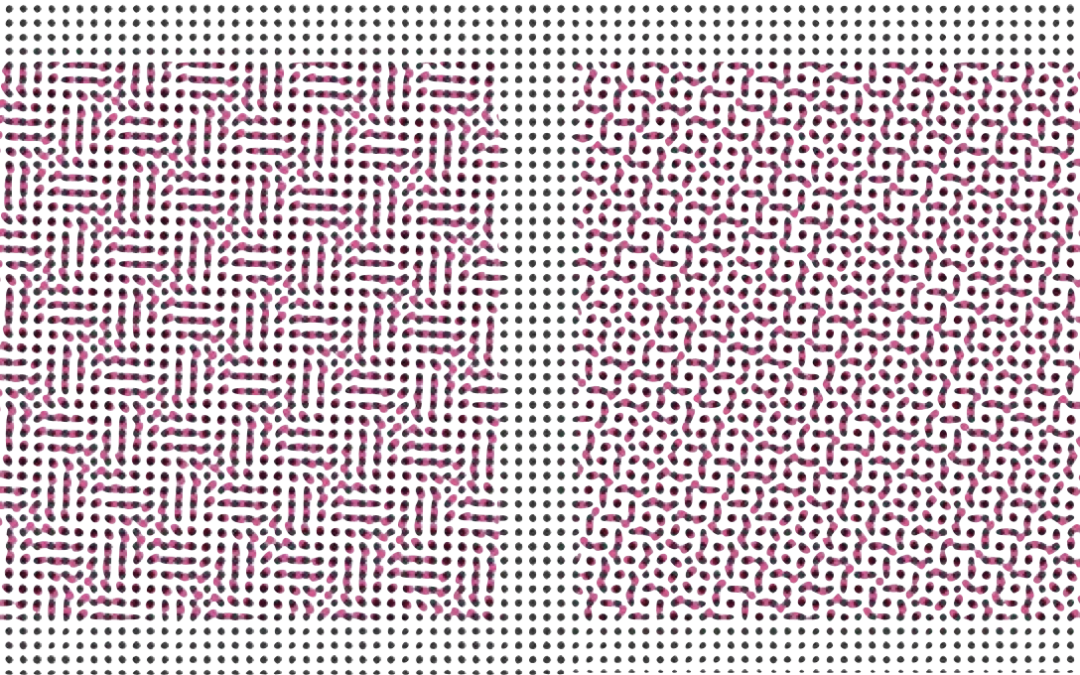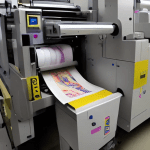This article is part of the FLEXO FLAW FIXING series
Moiré effect in flexo printing is an annoying phenomenon characterised by unwanted patterns created when screen angles clash. It’s a common problem that is more than just a nuisance; it can compromise the integrity of a print run and ultimately customer satisfaction.
Causes and Remedies for Moiré Effect in Flexo Printing
There are a number of factors that can cause moiré during the flexo printing process. The most common and their respective remedies are as follows:
Mechanical Misalignment
Cause: A major cause of moiré is gear and cylinder misalignment. As precision is the heartbeat of flexo printing, even the slightest mechanical deviation can throw a spanner in the works and lead to pattern interference.
Remedy: Precision alignment is the first line of defence. A stitch in time saves nine, as does a regular maintenance schedule that ensures gears and cylinders remain in harmony. Careful alignment of gears and cylinders can help alleviate this problem.
Inaccurate Plate Mounting
Cause: Errors in plate mounting can cause moiré patterns. Any degree of inaccuracy is amplified in the final print, resulting in these telltale signs.
Remedy: Advanced plate mounting techniques and equipment can locate and eliminate most errors. The use of digital plate mounting tools with magnification and micro-adjustment capabilities can improve accuracy. Investing in operator training and robust mounting protocols will minimise the chance of mounting errors and keep moiré at bay.
Screen Angle Interference
Cause: The choice of screen angles and dot patterns play a significant role in creating or reducing moiré. If the angles are too close together, they will interfere and create a moiré pattern.
Remedy: Optimised screen angles should be used to ensure that dots from different colour separations do not overlap in a way that creates moiré. The use of a moiré filter is a useful tool in the arsenal against this visual enemy. Advanced pre-press software can analyse and adjust angles before the plates hit the press.
Improper Substrate Properties
Cause: The substrate itself can contribute to moiré through its absorption and reflection properties. An uneven substrate can distort the printed dot, causing pattern interference.
Remedy: Understanding the properties of the substrate can guide adjustments in ink formulation and plate design to better suit the material. Pre-print tests on substrate samples can help to proactively identify potential moiré problems.
Mismatched Ink Viscosity
Cause: A mismatch between ink viscosity and printing pressure can be a recipe for moiré. Mismatched viscosity can cause the ink to spread or not transfer properly, exacerbating the visual disturbance.
Remedy: Targeted ink formulation to match the viscosity required for the substrate and precise adjustment at press can drastically reduce moiré. Installing real-time viscosity and pressure monitoring systems ensures that consistent printing conditions are maintained throughout the run.
Incompatibility of Plate and Anilox Roller
Cause: An overlooked aspect is the match between the plate and the anilox roller. These two must be in sync for harmonious ink transfer.
Remedy: The correct choice of anilox roller, taking into account its volume and cell count, combined with appropriate plate surface treatments, can solve this problem. Pre-press compatibility testing helps to identify potential incompatibilities before they affect the printing process.
Conclusion
In a detailed effort to understand the moiré effect in flexo printing, we have dissected the various causes and identified targeted remedies to mitigate this challenge. A mindset of continuous improvement and a proactive approach to print processing will ensure that flexo printing maintains its reputation for precision and quality. The aim is to tackle moiré before it becomes a major problem, saving time and resources and ensuring the final print is aesthetically appealing.


![[Flexo Flaw Fixing] Gear Marks Dirty print in flexo printing](https://flexopedia.net/wp-content/uploads/2022/07/Dirty_Marks-jpg.webp)


![[Flexo Flaw Fixing] Mechanical Damage to the Print Image Mechanical damage to the print image in flexo](https://flexopedia.net/wp-content/uploads/2022/07/059_Mechanical_Damage-jpg.webp)